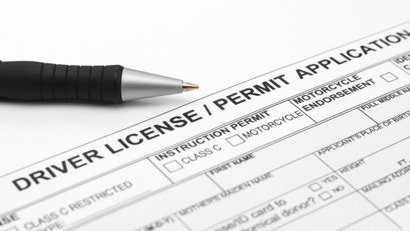Essential Paperwork Guide for REAL ID Application

The REAL ID Act, established in 2005, sets security standards for state-issued driver's licenses and identification cards. From October 1, 2020, these IDs will be mandatory for boarding commercial aircrafts, entering military bases, and accessing federal facilities. Understanding the REAL ID application process and the necessary documentation is crucial to avoid any last-minute surprises or delays.
Understanding REAL ID

Before diving into the paperwork, it’s essential to understand what the REAL ID entails. The REAL ID Act was enacted to enhance security by improving the reliability and accuracy of state-issued identification documents. Here’s what you should know:
- Compliance Deadline: Starting October 1, 2020, individuals without a REAL ID-compliant ID will not be permitted to board commercial flights or enter certain federal facilities.
- What Changes: REAL ID-compliant licenses feature specific markings and additional security features. They have gold or black stars in the top right corner.
- Who Needs It: All U.S. citizens who wish to engage in the aforementioned activities.
Application Process Overview

The process of obtaining a REAL ID involves several steps, which are outlined below:
- Check Compliance: Ensure your state participates in the REAL ID program.
- Visit Your DMV: Schedule a visit to your state’s Department of Motor Vehicles (DMV) or apply online if available.
- Provide Documentation: You’ll need to present specific documents for verification purposes.
- Application Submission: Fill out the application form with all the required details.
- Verification and Issuance: Once your documents are verified, your REAL ID will be issued.
Essential Documents for REAL ID

To apply for a REAL ID, you must provide the following documents:
| Document Type | Description |
|---|---|
| Proof of Identity | U.S. passport or a birth certificate (original or certified copy). |
| SSN Verification | Social Security Card, W-2, or 1099 tax form. |
| Proof of Residency | Two documents showing your name and address, like utility bills or bank statements. |
| Proof of Legal Status | Citizenship or lawful status documents (e.g., passport, Permanent Resident Card). |

👉 Note: Ensure all documents are unexpired. If your name has changed, you'll also need to provide legal documentation like a marriage certificate or court order.
Getting Organized

Organizing your documents before your DMV visit can streamline the process:
- Photocopy all documents in case of loss or damage.
- Prepare electronic copies if your DMV allows online document submissions.
- Check for any specific requirements or additional documents your state might need.
The Application Process

The REAL ID application process can be broken down into the following steps:
Step 1: Schedule Your DMV Visit

- Many DMVs offer appointment scheduling online, which can reduce wait times.
- If online services are not available, plan your visit during non-peak hours.
Step 2: Gathering Documents

Ensure you have all the documents listed above:
- An original or certified copy of your birth certificate or a U.S. passport.
- SSN document.
- Two residency proofs.
- Legal status documentation.
Step 3: Fill Out the Application

Whether you fill it out online or in-person:
- Provide accurate personal details.
- Ensure all required fields are filled correctly.
Step 4: Document Verification

Upon document submission:
- A DMV agent will review your documents to verify identity, residency, and legal status.
Step 5: REAL ID Issuance

After verification:
- If approved, you’ll get a temporary REAL ID or a receipt. The actual ID will be mailed to you.
- Photograph and fingerprints might be taken at this stage.
⚠️ Note: The processing time can vary, and there might be an additional fee for REAL ID.
With the REAL ID now in hand, you're all set for the enhanced security requirements. Remember that the deadline is a national one, but states may have their own rules and deadlines, so keep track of your local guidelines. Staying informed and prepared will make your transition to REAL ID compliant smoother, ensuring that your travels and official visits are uninterrupted. It's wise to take this step proactively to avoid any future inconvenience or the stress of last-minute applications. Whether it's for business, pleasure, or to enter secure facilities, REAL ID compliance is essential for seamless movement in our increasingly secure world.
Can I fly within the U.S. without a REAL ID?

+
Yes, you can, but you’ll need another form of TSA-approved identification like a passport or passport card until the REAL ID deadline.
Do I have to replace my current driver’s license for REAL ID?

+
Not immediately. You can keep using your current license for non-REAL ID activities or apply for a REAL ID voluntarily. Remember to apply before the deadline if you require it for air travel or federal access.
What if I change my name or address after getting a REAL ID?

+
If your name or address changes, you must update your REAL ID with the DMV to keep it valid. Bring documentation to support these changes.
Is REAL ID mandatory?

+
While having a REAL ID isn’t legally required, it will be necessary for certain activities post-deadline. Alternatives like a passport are accepted if you don’t have a REAL ID.